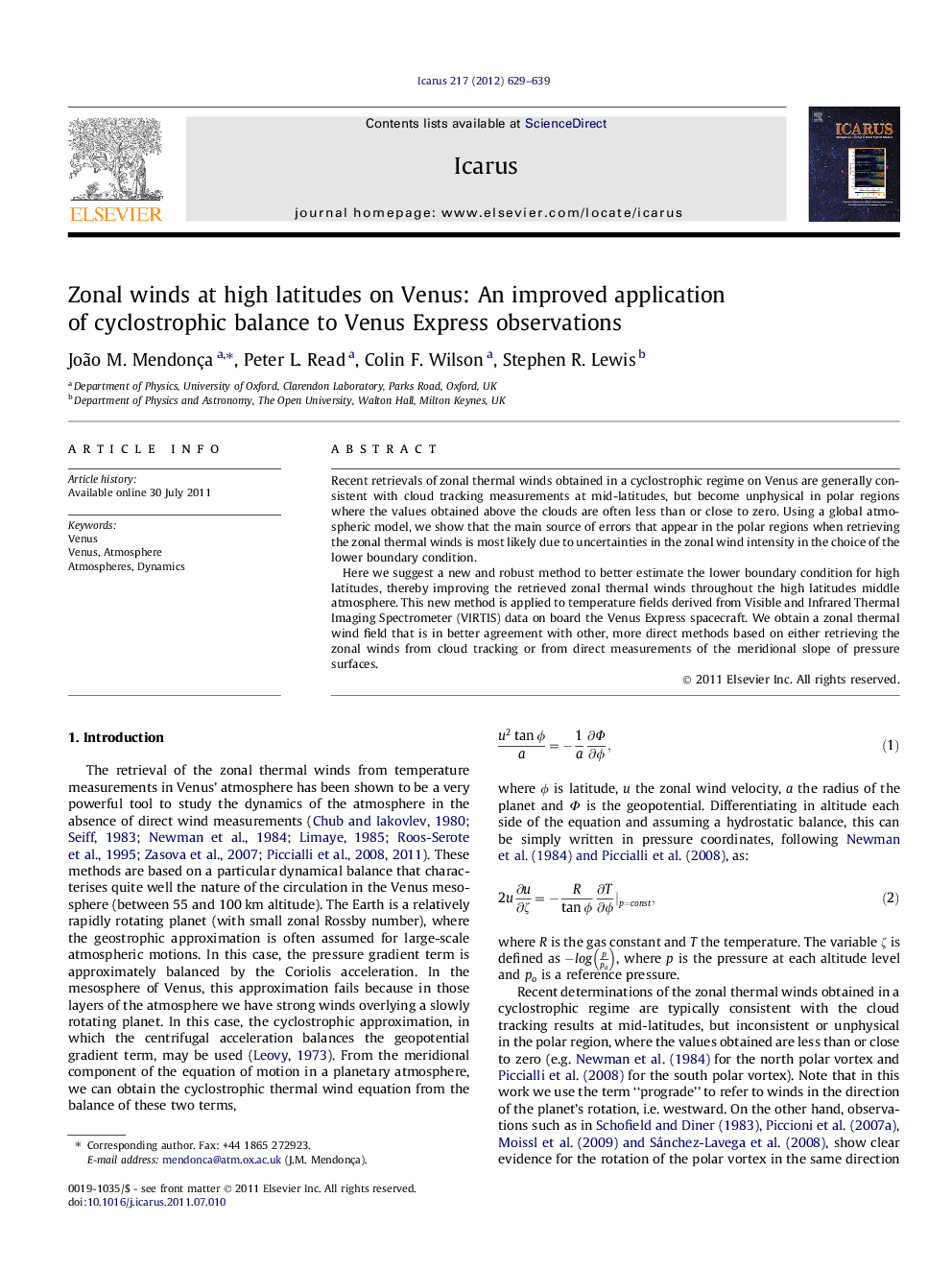| Article ID | Journal | Published Year | Pages | File Type |
|---|---|---|---|---|
| 1773688 | Icarus | 2012 | 11 Pages |
Recent retrievals of zonal thermal winds obtained in a cyclostrophic regime on Venus are generally consistent with cloud tracking measurements at mid-latitudes, but become unphysical in polar regions where the values obtained above the clouds are often less than or close to zero. Using a global atmospheric model, we show that the main source of errors that appear in the polar regions when retrieving the zonal thermal winds is most likely due to uncertainties in the zonal wind intensity in the choice of the lower boundary condition.Here we suggest a new and robust method to better estimate the lower boundary condition for high latitudes, thereby improving the retrieved zonal thermal winds throughout the high latitudes middle atmosphere. This new method is applied to temperature fields derived from Visible and Infrared Thermal Imaging Spectrometer (VIRTIS) data on board the Venus Express spacecraft. We obtain a zonal thermal wind field that is in better agreement with other, more direct methods based on either retrieving the zonal winds from cloud tracking or from direct measurements of the meridional slope of pressure surfaces.
► We use a global circulation model to study the validity of cyclostrophic balance. ► The retrieved zonal thermal wind main errors are from the lower boundary condition. ► We suggest a new method to estimate the lower boundary condition at high latitudes. ► The new zonal thermal wind field is in better agreement with other methods. ► We obtained larger winds at high latitudes than previous works.
